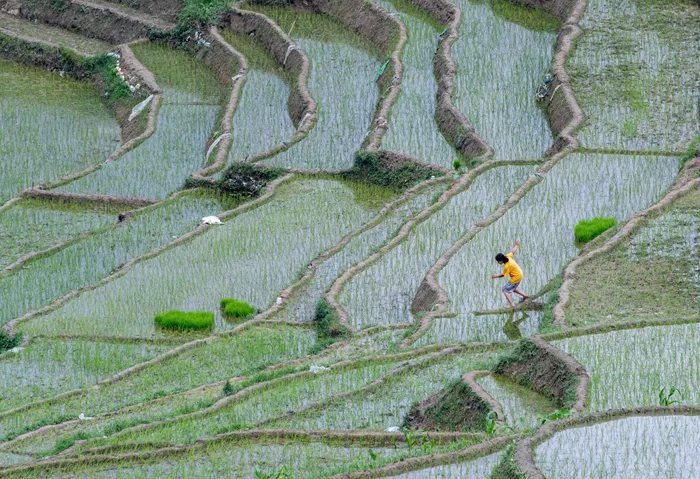Global rice prices set to soften as India eases export restrictions

The International Grains Council forecasts 2024-25 global rice production at 528 million tons, up 1% year-on-year. EPA-EFE/NARENDRA SHRESTHA
As the world gears up for a likely moderation in rice prices, industry experts are keeping a watchful eye on the developments from India. With its looming potential to lift export restrictions, the global rice market could experience a further softening, bringing relief to importing nations, including South Africa.
Wandile Sihlobo, chief economist at the Agricultural Business Chamber (Agbiz), yesterday highlighted that recent weeks have seen a notable decline in global rice prices due to expectations of ample supplies.
Notably, India began easing its stringent export restrictions at the end of September 2024, a move anticipated to enhance crop yields backed by favourable monsoon rains. Although a minimum export price of $490 per ton has been set, the shift signals a new chapter in the global rice supply dynamics.
Currently, rice prices on the international market are trading around $550 per ton, a stark decrease from the $650 per ton observed at the close of 2022, providing a flicker of hope for rice-dependent nations.
The 2023-24 season has seen a robust harvest from other leading rice exporters, such as Vietnam, Thailand, and the US, which has further alleviated fears of shortages that previously gripped the market.
Sihlobo offered reassurance, noting, “Fortunately, the world did not face a major rice shortage,” after India imposed its ban on non-basmati white and broken rice in July last year.
South Africa, reliant on rice imports to meet its yearly consumption of approximately one million tons, has particularly felt the ramifications of changes in the global rice market.
With the nation producing no local rice due to its semi-arid climate, the bulk of its imports stem from Thailand, which historically has supplied around 74% of South Africa's rice volume in the past five years. India ranks as the second-largest supplier, contributing an average of 21% during the same period.
The International Grains Council forecasts that global rice production for 2024-25 will reach 528 million tons, signalling a 1% uptick year-on-year. Factors including the expansion of planted areas and favourable weather conditions have stoked optimism regarding harvest sizes in notable rice-exporting countries such as Vietnam, Thailand, and Bangladesh.
The implications of these changes could be significant for South Africa’s economy. The nation may soon benefit from more affordable rice imports, supported by a relatively stronger domestic currency.
As Sihlobo explained, “This benefits the importers like South Africa”.
Furthermore, for the broader Southern Africa region, which is grappling with tight white maize supplies due to a recent mid-summer drought, the improvement in rice prices and accessible supplies could provide a much-needed buffer.
However, the rice landscape is not without its challenges. The depreciation of the South African rand against major currencies has contributed to higher import costs, which Reezwana Sumad of Nedbank CIB noted has made currency exchanges particularly sensitive to global risk factors, especially those unfolding in the Middle East.
As domestic rice price levels may still remain elevated compared to white maize products, consumers could experience limited immediate relief despite the easing of global prices.
Looking ahead, Sihlobo expressed concern over tighter white maize supplies in South Africa and the surrounding region, with expectations that a recovery could manifest following the 2024-25 season due to anticipated La Niña rains. As the global rice market continues to navigate these complexities, its evolving dynamics will play a pivotal role in ensuring food security and economic stability for South Africa and its neighbours.
BUSINESS REPORT